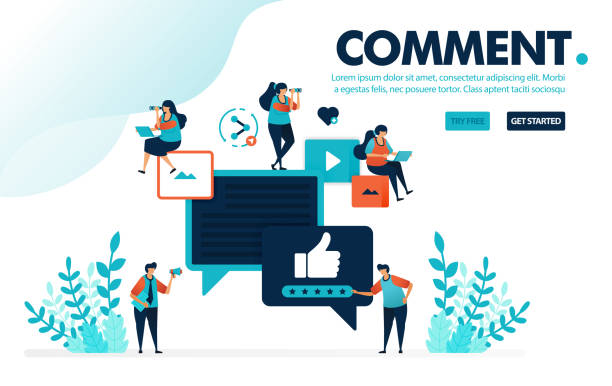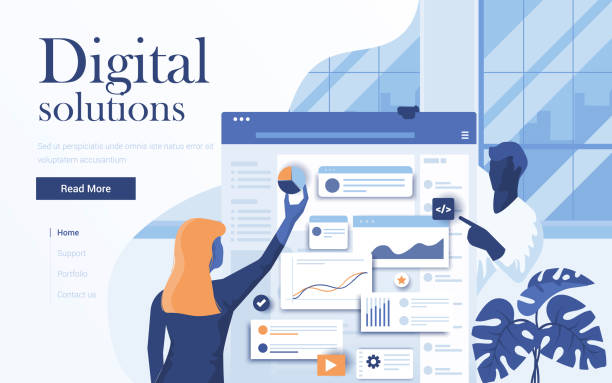Introduction to SEO-Optimized Website Design and its Importance in the Digital Age
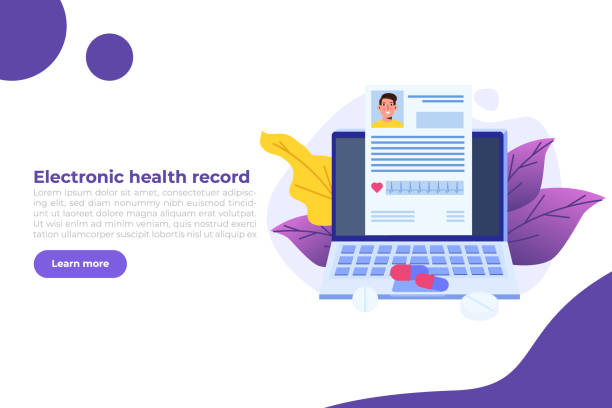
In the current era where the internet has become an inseparable part of daily life, having a website is not merely about online presence; true success lies in visibility and attracting an audience.
This is where the concept of #SEO_optimized_website_design and #search engine optimization (SEO) gains vital importance.
SEO-optimized website design means building a website that adheres to all technical and content standards that search engines like Google appreciate, allowing them to easily index its content and display it in top search results.
This not only significantly increases your website’s organic traffic but also helps you consistently and sustainably attract new customers and visitors.
Without SEO, even the most beautiful and functional websites might disappear among billions of web pages.
Since most users only look at the first few search results, appearing on the first pages of Google is an undeniable competitive advantage for any business, small or large.
In fact, SEO is not just a technique, but a long-term investment that yields significant returns.
Continuous website optimization makes search engines trust your content and consider it a reliable reference for users.
Is your company’s website as professional and trustworthy as it should be? With specialized corporate website design by Rasawp, create an online presence that reflects your credibility and attracts more customers.
✅ Build a powerful and professional image for your brand
✅ Convert visitors into real customers
⚡ Get a free consultation now!
Basic Principles of SEO in Website Design

To achieve an SEO-optimized website design, adhering to basic principles from the initial stages of development is essential.
The first step involves comprehensive keyword research; you need to understand what phrases your target audience uses to search for your services or products.
Intelligent use of these keywords in titles, meta descriptions, and page content helps search engines better understand the relevance of your content to user queries.
Website structure is also of high importance.
A logical and hierarchical structure that includes a clear Sitemap and easy navigation not only provides a better user experience but also allows search bots to crawl and index your pages more effectively.
Clean and readable URLs containing relevant keywords can also significantly help improve site ranking.
For example, instead of URLs with incomprehensible numbers and letters, URLs like www.yourdomain.com/seo-friendly-design are preferred.
Website loading speed is also an important ranking factor; users and search engines avoid slow sites.
Therefore, image optimization, using caching, and choosing appropriate hosting are among the essential measures.
Additionally, the site’s responsiveness for correct display on all devices (mobile, tablet, desktop) is a fundamental principle that Google heavily emphasizes.
These basic principles form the foundation of a successful SEO-optimized website design, and neglecting any one of them can harm your SEO efforts.
Technical Website Optimization for Search Engines
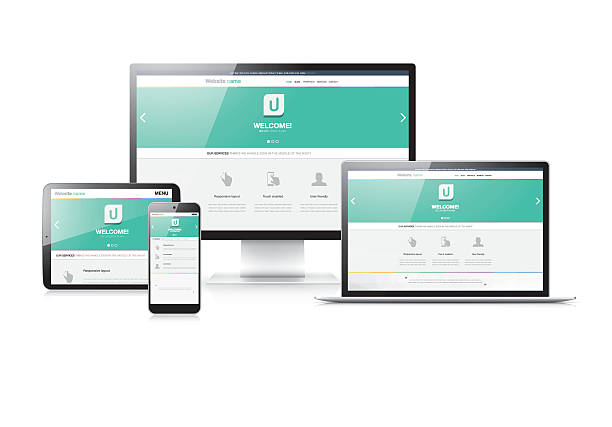
Technical optimization is one of the main pillars of SEO-optimized website design, often overlooked, but playing a vital role in site visibility by search engines.
This section includes all settings and configurations performed in the background of the site to allow search engines to properly crawl and index it.
One of the most important factors is site loading speed.
Google has repeatedly stated that site speed is a ranking factor, and users also value fast sites.
This includes image optimization (compression without quality loss), using browser caching, and choosing powerful hosting.
Using structured data or Schema Markup helps search engines better understand your site’s content and display it in a richer form (such as star ratings or contact information) in search results.robots.txt and sitemap.xml files are also key tools; robots.txt tells search engines which parts of the site not to crawl (to prevent indexing of low-value or duplicate pages), while sitemap.xml provides a map of all important site pages to bots to ensure complete site indexing.
Fixing crawl errors, using canonical tags to prevent duplicate content, and ensuring site security using the HTTPS protocol are other vital aspects of technical optimization for an SEO-optimized website design.
| Technical Element | Description and Importance | Status (Yes/No) |
|---|---|---|
| Site Loading Speed | Crucial ranking factor and user experience. | Yes |
| HTTPS Protocol | User security and trust, Google ranking factor. | Yes |
| Sitemap (Sitemap.xml) | Guide for search engines to index pages. | Yes |
| Robots.txt File | Controls search bot access to site sections. | Yes |
| Structured Data (Schema Markup) | Helps search engines better understand content and display rich results. | Yes |
| SEO-Friendly URLs | Readable addresses relevant to keywords. | Yes |
| Canonical Tags | Prevents duplicate content issues. | Yes |
Content is King: SEO-Driven Content Strategy

In the world of SEO, the famous phrase “Content is King” perfectly illustrates the importance of quality content in SEO-optimized website design.
Regardless of technical aspects, your site’s content must be valuable, comprehensive, and relevant to users.
An SEO-driven content strategy goes beyond merely stuffing pages with keywords; the main goal is to produce content that answers user questions, solves their problems, and increases their knowledge.
Long-form content, with more details, usually performs better in search results, as it demonstrates depth and comprehensiveness.
The E-A-T principle (Expertise, Authoritativeness, Trustworthiness), emphasized by Google, refers to the expertise, authority, and trustworthiness of the content and its author.
This means your content should be written by experts, have reliable sources, and provide accurate information.
Natural and intelligent use of keywords throughout the content, without overdoing it (keyword stuffing), is very important.
Also, combining textual content with various formats such as images, videos, infographics, and podcasts can enrich the user experience and increase user dwell time on the site.
Creating content clusters around a main topic and internal linking between them helps search engines better understand your site’s thematic structure and transfer authority between related pages.
This content approach is not only beneficial for your site’s SEO but also attracts audience trust and loyalty.
Are you disappointed with your online store’s low conversion rate?
Rasawp, with professional e-commerce website design, is your definitive solution!
✅ Increase your sales and revenue
✅ Unparalleled user experience for your customers
⚡ Get a free consultation now!
User Experience (UX) and its Role in SEO

The connection between User Experience (UX) and SEO has become increasingly important.
Google is increasingly focusing on user experience signals for website ranking.
An SEO-optimized website design is not just about being technical; it must also provide value to users.
Core Web Vitals, a set of Google’s metrics for measuring the quality of user experience on a site, includes Largest Contentful Paint (speed of loading main content), First Input Delay (delay in responding to the first user interaction), and Cumulative Layout Shift (visual stability of the page).
Improving these metrics directly affects SEO ranking.
If users immediately leave your site after entering (high bounce rate) or spend little time on it (low dwell time), this signals to search engines that your content is not valuable or relevant enough.
Therefore, intuitive and easy navigation, responsive design, content readability, and clear Call to Actions are all factors that improve user experience and, in turn, enhance SEO ranking.
Sites with attractive user interfaces and smooth performance engage users for longer periods and increase their likelihood of returning.
Consequently, investing in UX improvement is an investment in improving your SEO and overall online success.
Ignoring user experience means ignoring important signals that search engines use to evaluate your site’s quality.
The Importance of Responsive Design and Mobile-First Indexing

In today’s world, where mobile phone usage for internet access significantly surpasses desktop computers, responsive design is no longer a luxury option but a necessity for any SEO-optimized website design.
Google, by introducing the concept of Mobile-First Indexing, has officially announced that it considers your site’s mobile version as the primary version for indexing and ranking.
This means that if your site does not perform well on mobile devices, even if it is excellent on desktop, it may lose its rankings in search results.
Responsive design ensures that your website displays correctly regardless of the device’s screen size and provides a consistent user experience.
This includes automatic adjustment of font sizes, images, and page layouts to prevent unnecessary horizontal scrolling and zooming.
In addition to its direct impact on SEO, a responsive site improves user experience, which itself is a positive signal for search engines.
Reduced bounce rate and increased user dwell time on the site are among the benefits of a responsive design.
Therefore, any website seeking sustainable success in search results must ensure that its mobile version is fully optimized and user-friendly.
Ignoring this important factor can lead to the loss of significant traffic from mobile users, who constitute a large portion of online searches.
Link Building and Domain Authority for SEO-Optimized Websites

Link Building is one of the most important and challenging aspects of SEO, playing a key role in increasing your site’s Domain Authority and ranking.
An SEO-optimized website design is not limited to internal content; the quality and quantity of links pointing to your website from other sites (backlinks) serve as a vote of confidence in your content for search engines.
The more numerous and higher quality these backlinks are, the more authoritative and trustworthy search engines consider your site.
However, not all links are equal.
Quality links from relevant and reputable sites have more value than spammy or irrelevant links.
Link-building strategies include creating shareable content that naturally attracts backlinks, guest posting on other blogs, broken link building, and collaborating with influencers.
In addition to external links, internal linking is also very important.
Linking from stronger pages on the site to weaker ones helps distribute “link juice” throughout the site and assists search engines in understanding your pages’ structure and hierarchy.
A strong and ethical link-building strategy can significantly increase your site’s organic traffic and turn it into an authority in your industry.
| Backlink Type | Description | Impact on SEO |
|---|---|---|
| Links from Authoritative Sites | Links from websites with high authority and domain ranking. | Very positive; increases your domain authority. |
| Topic-Relevant Links | Links from websites with content relevant to your site. | Positive; indicates thematic relevance and authority. |
| Guest Post Links | Links acquired by writing articles on other blogs. | Positive; an opportunity to demonstrate expertise and attract links. |
| Internal Links | Links between different pages of a website. | Positive; improves navigation, distributes authority, and helps understand site structure. |
| Broken Link Building | Finding broken links on other sites and suggesting your content. | Positive; builds relationships and acquires quality links. |
| Nofollow Links | Links that do not pass authority signals to search engines. | No direct impact on ranking, but can attract traffic. |
SEO Analysis and Performance Monitoring Tools

After implementing the SEO-optimized website design and optimization steps, performance monitoring and analysis is crucial to ensure the effectiveness of your efforts.
Various tools are available to help you monitor your site’s SEO status, identify issues, and discover new opportunities.
Google Analytics is an essential tool for website traffic analysis.
This tool provides comprehensive information about traffic sources, user behavior (such as dwell time, pages visited, and bounce rate), and conversions (sales, sign-ups).
By analyzing this data, you can gain a better understanding of how users interact with your site and identify strengths and weaknesses.
Google Search Console is another Google tool specifically designed for SEO.
It provides information about your site’s performance in search results, keywords that led to your visibility, indexing issues, crawl errors, and backlinks.
Paid tools like SEMrush and Ahrefs also offer a suite of advanced capabilities, including advanced keyword research, competitor analysis, backlink auditing, and rank tracking.
Regular use of these tools allows you to continuously optimize your SEO strategy and ensure your site is on the right path to achieving its goals.
Does your current corporate website not reflect your brand’s credibility and power as it should? Rasawp solves this challenge for you with professional corporate website design.
✅ Increase visitor credibility and trust
✅ Targeted acquisition of more customers
⚡ Click for a free consultation!
Common Mistakes in Website Design and SEO Optimization

On the path to SEO-optimized website design, there are some common mistakes that can render your efforts fruitless and harm your site’s SEO ranking.
One of the biggest mistakes is keyword stuffing.
Filling text with keywords in an unnatural way not only disrupts the user experience but is also identified as a spam technique by search engines and can lead to site penalties.
Ignoring mobile optimization is also a disastrous mistake, especially given Google’s Mobile-First Indexing.
If your site does not display well on mobile devices and is difficult to use, you will lose a lot of traffic.
Lack of proper internal linking or the absence of a logical site structure are also common mistakes.
These issues prevent search engines from easily navigating your site and discovering and indexing important pages.
Additionally, failing to update content, publishing low-quality or duplicate content, neglecting 404 errors and broken links, and not installing an SSL certificate (HTTPS) are other factors that harm site SEO.
To prevent these problems, you should regularly review your site, use SEO tools to identify errors, and always prioritize quality and user experience.
The Future of SEO-Driven Website Design and Emerging Trends
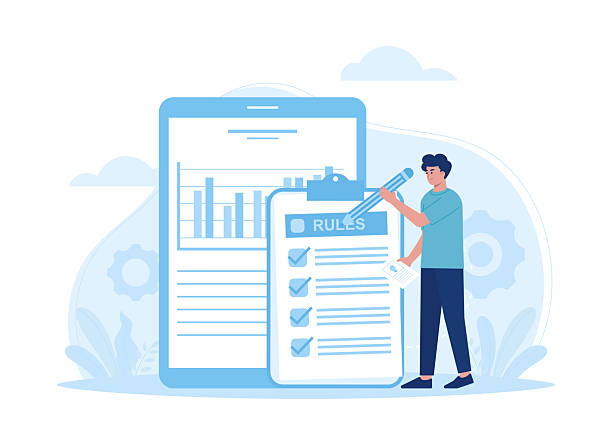
The world of SEO is constantly changing and evolving, and an SEO-optimized website design must adapt to these changes.
A look at future trends indicates that Artificial Intelligence (AI) will play an increasing role in search engine algorithms.
Voice Search and Semantic Search, which focus on understanding user intent and meaning, will become increasingly important.
This means that your content should not only be optimized for specific keywords but also answer long and conversational user queries and cover a broad semantic context.
The evolution of the E-A-T principle (Expertise, Authoritativeness, Trustworthiness) will also continue; Google will increasingly seek authoritative and reliable information sources.
Therefore, focusing on creating in-depth, accurate content written by experts is of high importance.
Personalized user experience is also a growing trend, where websites must be able to offer unique content and experiences based on each user’s needs and interests.
Ultimately, focusing on quality content and responding to user intent will be the core of SEO in the future.
Sites that adhere to these principles and align themselves with technological advancements will succeed in the digital competition and achieve their goals in SEO-optimized website design.
Frequently Asked Questions
| Row | Question | Answer |
|---|---|---|
| 1 | What is an SEO-optimized website? | It is a website designed and developed according to Search Engine Optimization (SEO) principles to achieve higher rankings in search results. |
| 2 | Why is having an SEO-optimized website important? | It increases visibility, attracts organic traffic, boosts conversions, and builds brand credibility, all of which contribute to business growth. |
| 3 | What are the key elements of SEO-optimized website design? | Technical SEO (speed, mobile-friendliness), On-Page SEO (keywords, content), User Experience (UX), and website security (HTTPS). |
| 4 | How does website speed affect SEO? | Faster sites improve user experience, reduce bounce rates, and are favored by search engines, leading to better rankings. |
| 5 | Is mobile compatibility important for SEO? | Absolutely. Google uses mobile-first indexing, so responsive design for mobile is crucial for ranking. |
| 6 | What role does content play in SEO-optimized website design? | High-quality, relevant, and keyword-optimized content is essential for attracting users and signaling relevance to search engines. |
| 7 | What is keyword research and why is it important? | Finding popular search terms people use. This process helps align content with user intent and attracts relevant traffic. |
| 8 | How is User Experience (UX) related to SEO? | Good UX (easy navigation, readability) keeps users on the site longer, reduces bounce rates, and sends positive signals to search engines. |
| 9 | What is a Sitemap and how does it help SEO? | It’s a file that lists all pages of a site. It helps search engines crawl and index your site more effectively. |
| 10 | Should I use HTTPS for my website? | Yes, HTTPS provides security and is considered a minor ranking factor. It also increases user trust. |
And other services of Rasawp Advertising Agency in the field of advertising
Smart Digital Advertising: A new service for increasing website visits through precise audience targeting.
Smart Website Development: A professional solution for customer acquisition focusing on the use of real data.
Smart Advertising Campaign: A new service for increasing sales through intelligent data analysis.
Smart Marketing Automation: Professional optimization for increasing sales by customizing user experience.
Smart Brand Identity: An effective tool for analyzing customer behavior with the help of intelligent data analysis.
And over a hundred other services in the field of internet advertising, advertising consultation, and organizational solutions
Internet Advertising | Advertising Strategy | Advertorial
Sources
Comprehensive Guide to SEO-Optimized Website Design on VirgoolKey SEO Tips on Zoomit WebsiteSEO Articles in Digikala MagazineSpecialized SEO Blog for Online Success
? Transform your business in the digital world with Rasawp Afarin. From secure and professional website design to SEO and targeted content marketing, we offer comprehensive solutions for your success.
📍 Tehran, Mirdamad Street, next to Bank Markazi, Southern Kazeroon Alley, Ramin Alley, No. 6

